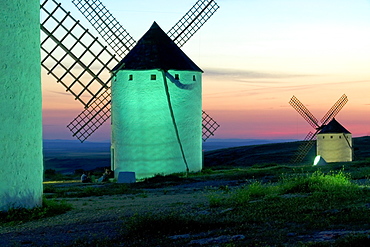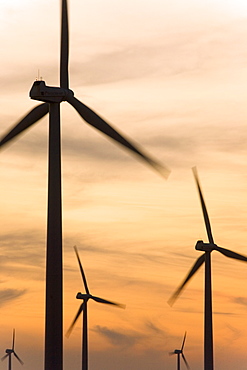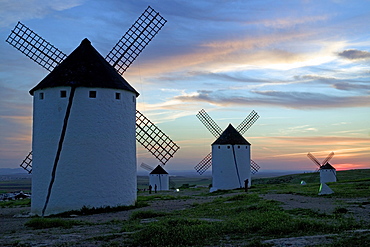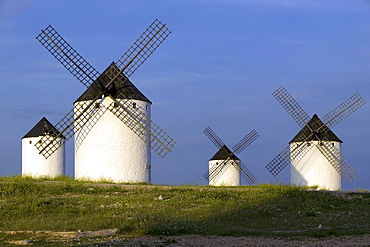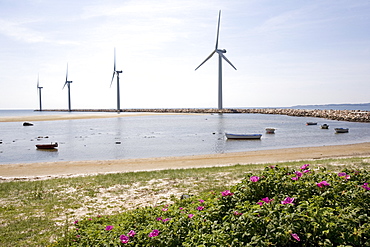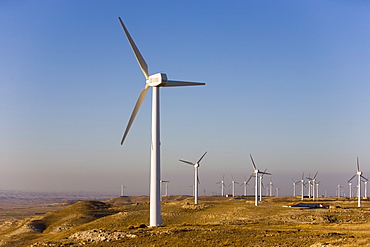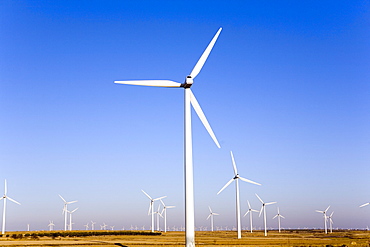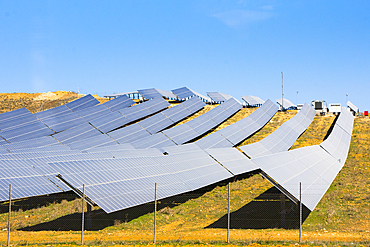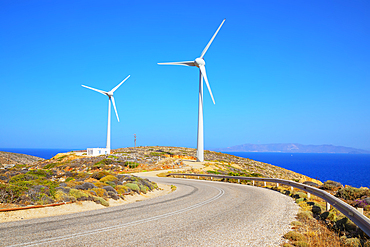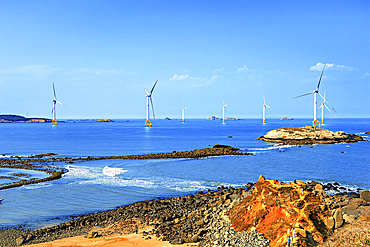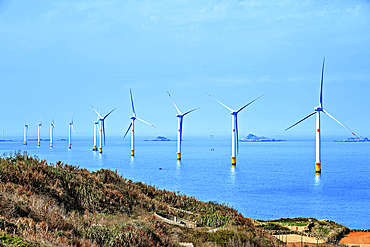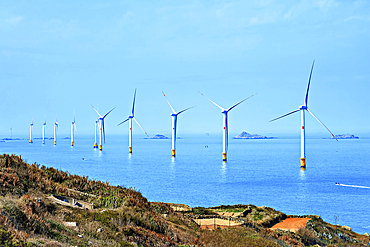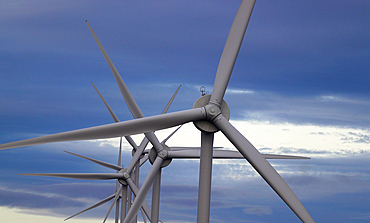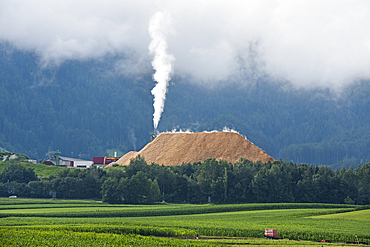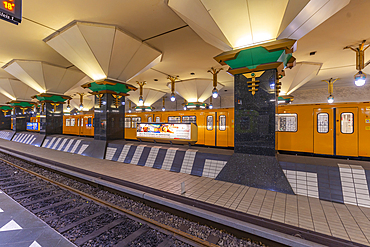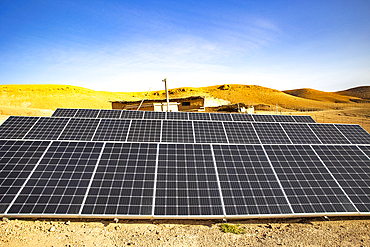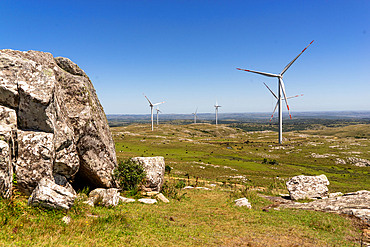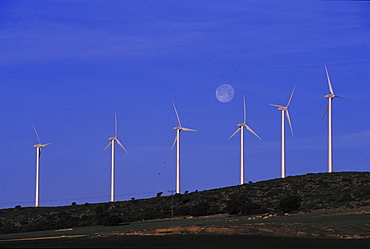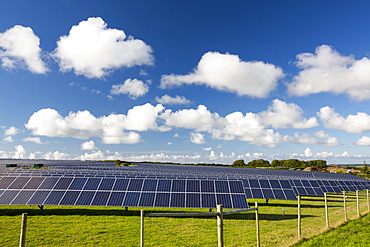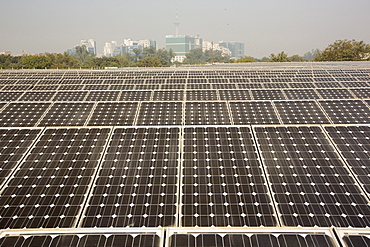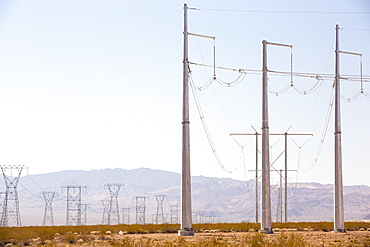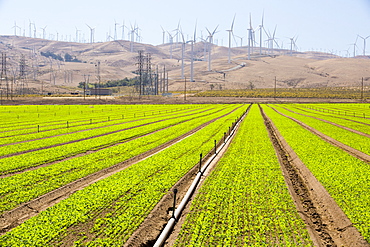Results
25 results found

Heliostats at the solar energy scientific research centre, Tabernas, Almeria, Andalusia, Spain, Europe
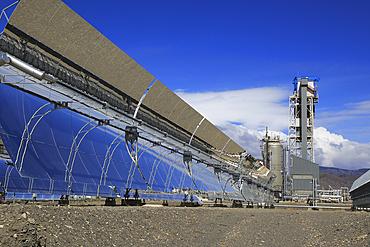
Curved concave reflector panels desalinisation plant at the solar energy scientific research centre, Tabernas, Almeria, Andalusia, Spain, Europe
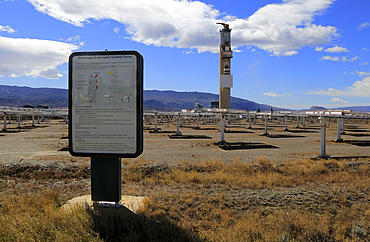
Heliostats and central receiver CESA-1 Tower at solar energy scientific research centre, Tabernas, Almeria, Andalusia, Spain, Europe
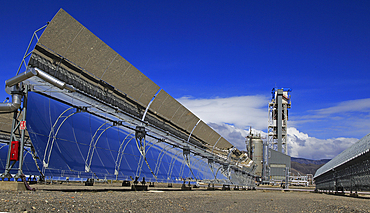
Curved concave reflector panels desalinisation plant at the solar energy scientific research centre, Tabernas, Almeria, Andalusia, Spain, Europe
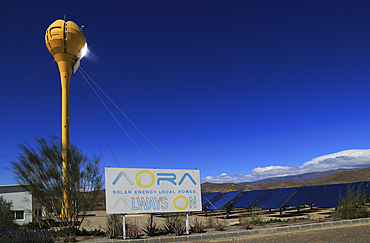
Heliostats reflect sunrays to receiver tower, solar energy scientific research centre, AORA Tulip System, Tabernas, Almeria, Andalusia, Spain, Europe
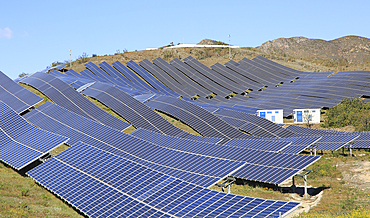
Array of solar panels on a bright sunny day, Sierra Alhamilla, near Nijar, Almeria, Andalusia, Spain, Europe
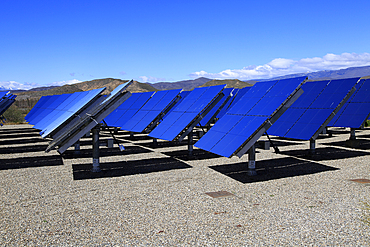
Heliostats reflecting sun rays, solar energy scientific research centre, AORA Tulip System, Tabernas, Almeria, Andalusia, Spain, Europe
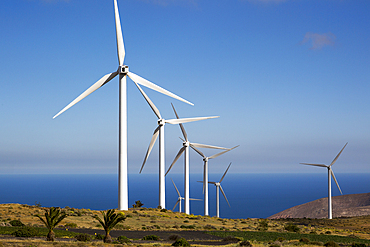
Turbines at Parque Eolico de Lanzarote wind farm, Lanzarote, Canary Islands, Spain, Atlantic, Europe
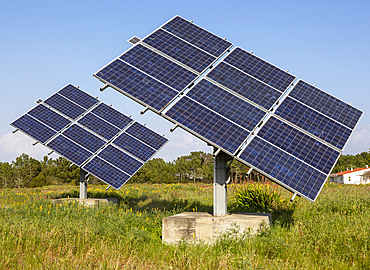
Solar panel array in field in countryside providing domestic energy near village of Rogil, Algarve district, Portugal, Europe
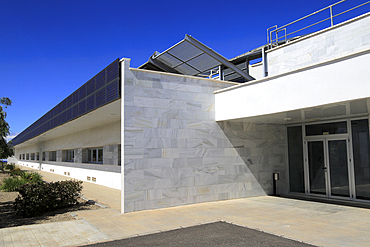
Energy efficient CIEMAT building research at Solar energy research establishment near Tabernas, Almeria, Andalusia, Spain, Europe
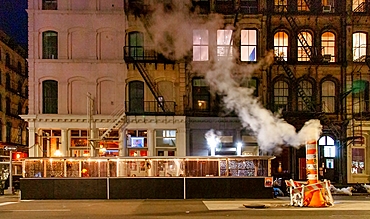
Steam emitted from the New York Steam System, dating back to 1882 providing steam to heat, cool or disinfect around 1,700 buildings, New York, United States of America, North America
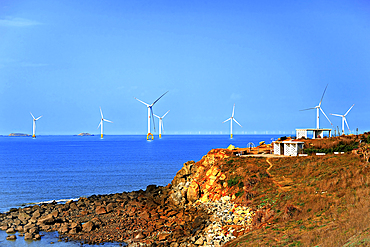
The coast of Pingtan Island with a view of windmills in the sea, Fuzhou City, Fujian Province, China
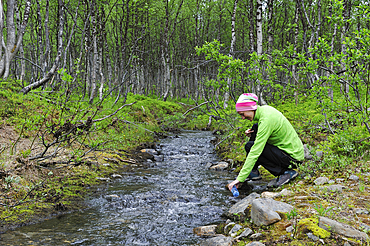
Woman filling a bottle with pure water from a torrent coming from glciers, Nordmannvikdalen valley, region of Lyngen, County of Troms, Norway, Northern Europe
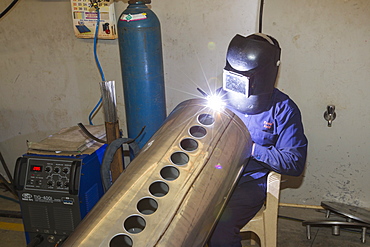
The Kamal factory in Bangalore, Karnataka, India that manufactures solar thermal panels for heating water.
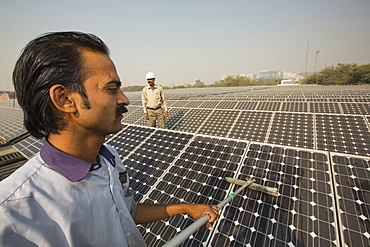
Workers washing the dust off solar panels at a 1 MW solar power station run by Tata power on the roof of an electricity company in Delhi, India, to make them more efficient.
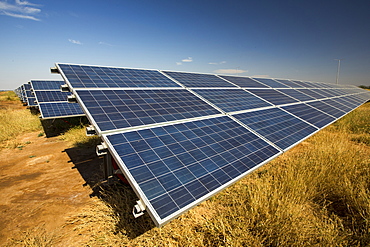
Asia's largest solar popwer station, the Gujarat Solar Park, in Gujarat, India. It has an installed capacity of 1000 MW
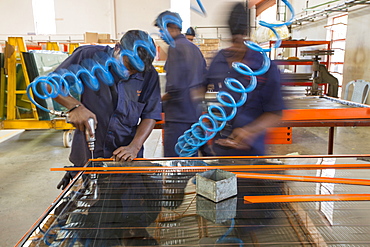
The Kamal factory in Bangalore, Karnataka, India that manufactures solar thermal panels for heating water.
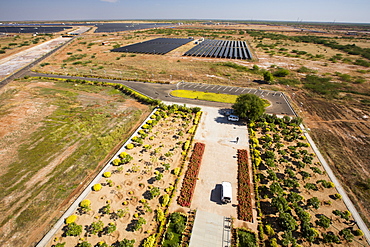
Asia's largest solar popwer station, the Gujarat Solar Park, in Gujarat, India. It has an installed capacity of 1000 MW
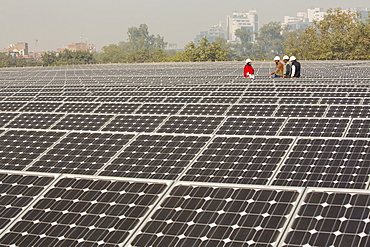
Workers at a 1 MW solar power station run by Tata power on the roof of an electricity company in Delhi, India.
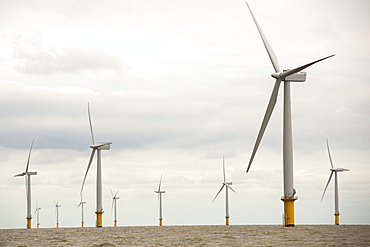
Gunfleet Sands offshore wind farm is owned and operated by Dong energy. It consists of 48 turbines off Brightlingsea in essex, UK, and has a capacity of 172 MW, enough to power 125,000 homes.
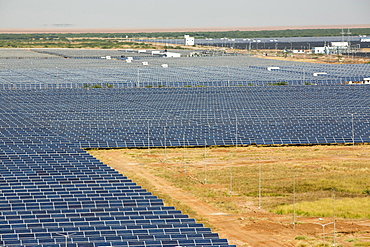
Asia's largest solar popwer station, the Gujarat Solar Park, in Gujarat, India. It has an installed capacity of 1000 MW
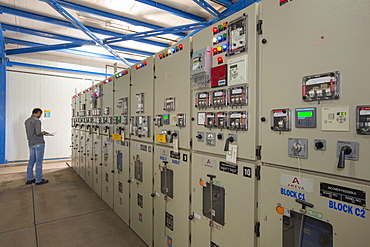
Asia's largest solar power station, the Gujarat Solar Park, in Gujarat, India. It has an installed capacity of 1000 MW
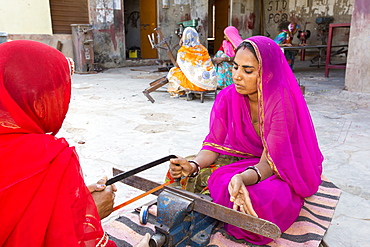
Women constructing solar cookers at the Barefoot College in Tilonia, Rajasthan, India. The Barefoot College is a worldwide charity, founded by Bunker Roy, its aims are, education, drinking water, electrification through solar power, skill development, health, women empowerment and the upliftment of rural people. The use of the cookers, vastly reduces the amount of fire wood women have to go out and collect from the forest.
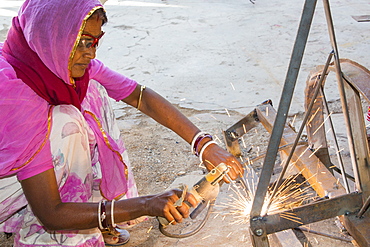
Women welding joints during the construction of solar cookers at the Barefoot College in Tilonia, Rajasthan, India. The Barefoot College is a worldwide charity, founded by Bunker Roy, its aims are, education, drinking water, electrification through solar power, skill development, health, women empowerment and the upliftment of rural people. Solar cookers save women having to walk to the froest to cut down wood for cooking, thus saving the forests, and a daily chore for woman.
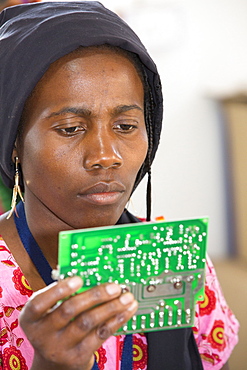
Women on a solar workshop, learning how to make solar lanters at the Barefoot College in Tilonia, Rajasthan, India. The Barefoot College is a worldwide charity, founded by Bunker Roy, its aims are, education, drinking water, electrification through solar power, skill development, health, women empowerment and the upliftment of rural people. Many of the women are iliterate or semi literate. They are trained from countries all over the world, so that they can take their skills back and cascade the learning.
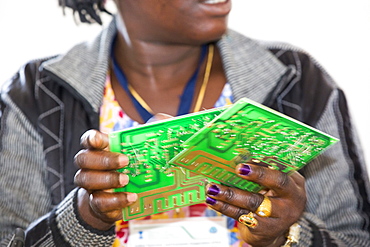
Women on a solar workshop, learning how to make solar lanters at the Barefoot College in Tilonia, Rajasthan, India. The Barefoot College is a worldwide charity, founded by Bunker Roy, its aims are, education, drinking water, electrification through solar power, skill development, health, women empowerment and the upliftment of rural people. Many of the women are iliterate or semi literate. They are trained from countries all over the world, so that they can take their skills back and cascade the learning.
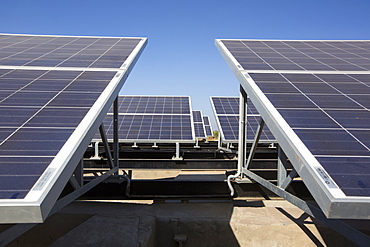
Solar panelsproviding electricity at the Barefoot College in Tilonia, Rajasthan, India. The Barefoot College is a worldwide charity, founded by Bunker Roy, its aims are, education, drinking water, electrification through solar power, skill development, health, women empowerment and the upliftment of rural people.
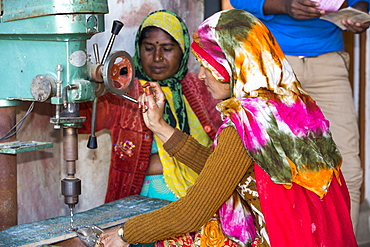
Women building solar cookers at the Barefoot College in Tilonia, Rajasthan, India. The Barefoot College is a worldwide charity, founded by Bunker Roy, its aims are, education, drinking water, electrification through solar power, skill development, health, women empowerment and the upliftment of rural people.
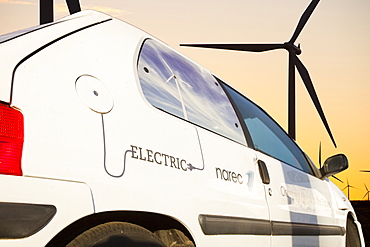
An electric car at dawn over Whitlee wind farm on Eaglesham Moor just south of Glasgow in Scotland, United Kingdom, Europe
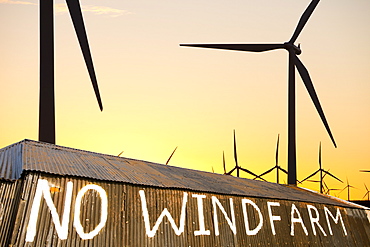
Dawn over Whitlee wind farm on Eaglesham Moor just south of Glasgow in Scotland, United Kingdom, Europe
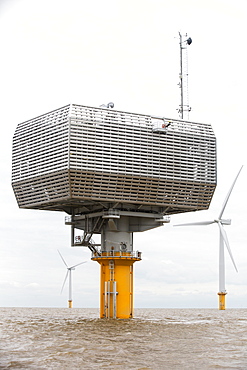
Gunfleet Sands offshore wind farm, including the sub station is owned and operated by Dong energy. It consists of 48 turbines off Brightlingsea in essex, UK, and has a capacity of 172 MW, enough to power 125,000 homes
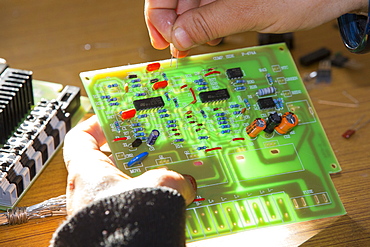
Women on a solar workshop, learning how to make solar lanters at the Barefoot College in Tilonia, Rajasthan, India. The Barefoot College is a worldwide charity, founded by Bunker Roy, its aims are, education, drinking water, electrification through solar power, skill development, health, women empowerment and the upliftment of rural people. Many of the women are iliterate or semi literate. They are trained from countries all over the world, so that they can take their skills back and cascade the learning.
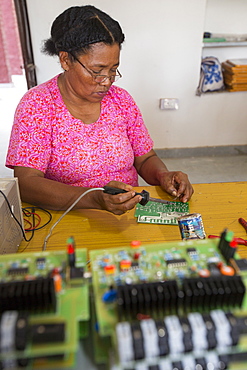
Women on a solar workshop, learning how to make solar lanters at the Barefoot College in Tilonia, Rajasthan, India. The Barefoot College is a worldwide charity, founded by Bunker Roy, its aims are, education, drinking water, electrification through solar power, skill development, health, women empowerment and the upliftment of rural people. Many of the women are iliterate or semi literate. They are trained from countries all over the world, so that they can take their skills back and cascade the learning.
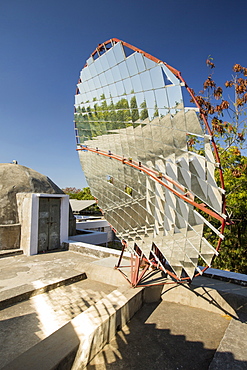
Solar cookers at the Barefoot College in Tilonia, Rajasthan, India. The Barefoot College is a worldwide charity, founded by Bunker Roy, its aims are, education, drinking water, electrification through solar power, skill development, health, women empowerment and the upliftment of rural people. The use of the cookers, vastly reduces the amount of fire wood women have to go out and collect from the forest.
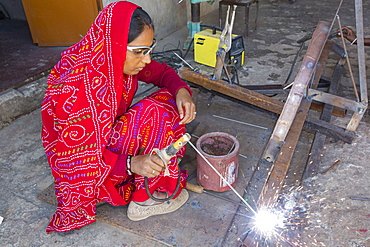
Women welding joints during the construction of solar cookers at the Barefoot College in Tilonia, Rajasthan, India. The Barefoot College is a worldwide charity, founded by Bunker Roy, its aims are, education, drinking water, electrification through solar power, skill development, health, women empowerment and the upliftment of rural people. Solar cookers save women having to walk to the froest to cut down wood for cooking, thus saving the forests, and a daily chore for woman.
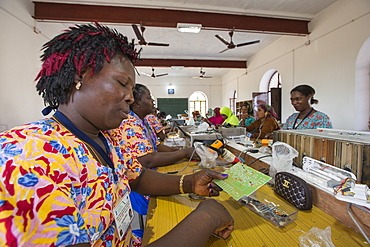
Women on a solar workshop, learning how to make solar lanters at the Barefoot College in Tilonia, Rajasthan, India. The Barefoot College is a worldwide charity, founded by Bunker Roy, its aims are, education, drinking water, electrification through solar power, skill development, health, women empowerment and the upliftment of rural people. Many of the women are iliterate or semi literate. They are trained from countries all over the world, so that they can take their skills back and cascade the learning.
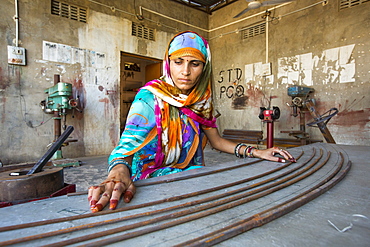
Women constructing solar cookers at the Barefoot College in Tilonia, Rajasthan, India. The Barefoot College is a worldwide charity, founded by Bunker Roy, its aims are, education, drinking water, electrification through solar power, skill development, health, women empowerment and the upliftment of rural people. The use of the cookers, vastly reduces the amount of fire wood women have to go out and collect from the forest.
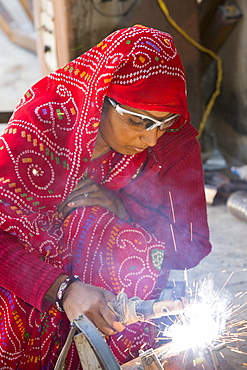
Women welding joints during the construction of solar cookers at the Barefoot College in Tilonia, Rajasthan, India. The Barefoot College is a worldwide charity, founded by Bunker Roy, its aims are, education, drinking water, electrification through solar power, skill development, health, women empowerment and the upliftment of rural people. Solar cookers save women having to walk to the froest to cut down wood for cooking, thus saving the forests, and a daily chore for woman.
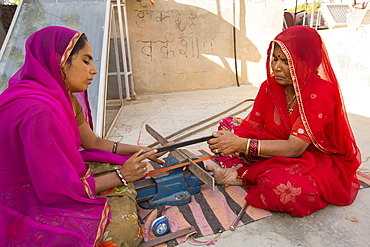
Women constructing solar cookers at the Barefoot College in Tilonia, Rajasthan, India. The Barefoot College is a worldwide charity, founded by Bunker Roy, its aims are, education, drinking water, electrification through solar power, skill development, health, women empowerment and the upliftment of rural people.
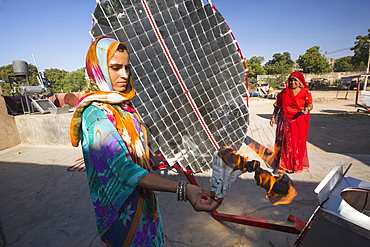
Women constructing solar cookers at the Barefoot College in Tilonia, Rajasthan, India, demonstrate how hot the device is, by holding a sheet of newspaper which instantly sets on fire in the 300 degree Celcius heat. The Barefoot College is a worldwide charity, founded by Bunker Roy, its aims are, education, drinking water, electrification through solar power, skill development, health, women empowerment and the upliftment of rural people. The use of the cookers, vastly reduces the amount of fire wood women have to go out and collect from the forest.
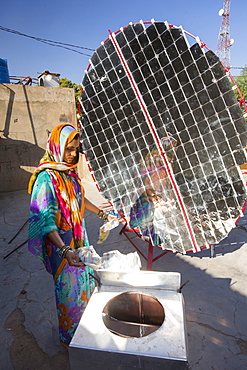
Women constructing solar cookers at the Barefoot College in Tilonia, Rajasthan, India. The Barefoot College is a worldwide charity, founded by Bunker Roy, its aims are, education, drinking water, electrification through solar power, skill development, health, women empowerment and the upliftment of rural people.
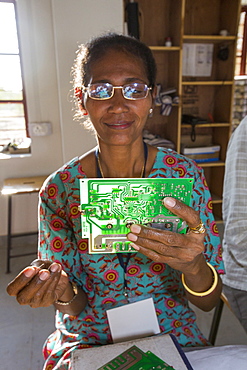
Women on a solar workshop, learning how to make solar lanters at the Barefoot College in Tilonia, Rajasthan, India. The Barefoot College is a worldwide charity, founded by Bunker Roy, its aims are, education, drinking water, electrification through solar power, skill development, health, women empowerment and the upliftment of rural people. Many of the women are iliterate or semi literate. They are trained from countries all over the world, so that they can take their skills back and cascade the learning.
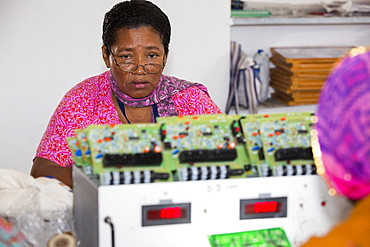
Women on a solar workshop, learning how to make solar lanters at the Barefoot College in Tilonia, Rajasthan, India. The Barefoot College is a worldwide charity, founded by Bunker Roy, its aims are, education, drinking water, electrification through solar power, skill development, health, women empowerment and the upliftment of rural people. Many of the women are iliterate or semi literate. They are trained from countries all over the world, so that they can take their skills back and cascade the learning.
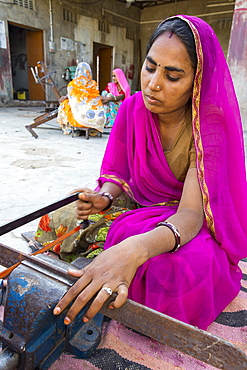
Women constructing solar cookers at the Barefoot College in Tilonia, Rajasthan, India. The Barefoot College is a worldwide charity, founded by Bunker Roy, its aims are, education, drinking water, electrification through solar power, skill development, health, women empowerment and the upliftment of rural people. The use of the cookers, vastly reduces the amount of fire wood women have to go out and collect from the forest.
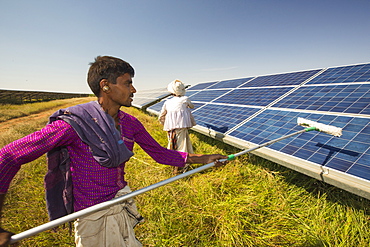
Asia's largest solar popwer station, the Gujarat Solar Park, in Gujarat, India. It has an installed capacity of 1000 MW. Here workers wash dust off the panels to increase their efficiency.
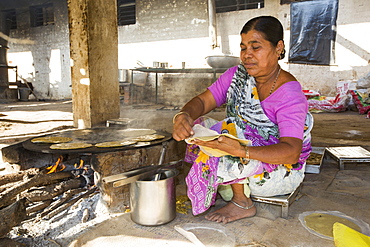
The Muni Seva Ashram in Goraj, near Vadodara, India, is a tranquil haven of humanitarian care. The Ashram is hugely sustainable, next year it will be completely carbon neutral. Its first solar panels were installed in 1984, long before climate change was on anyones agenda. Their energy is provided from solar panels, and wood grown on the estate. Waste food and animal manure is turned inot biogas to run the estates cars and also used for cooking. Solar cookers are also used, and the air conditioning for the hospital is solar run. 70 % of the food used is grown on the estate. They provide an orphanage, schools for all ages, vocational training, care for the elderly, a specialist cancer hospital withstate of the art machinary, and even have a solar crematorium. This shot shows a cook preparing chapatis on a biofuel stove.
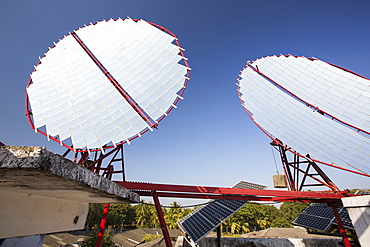
The Muni Seva Ashram in Goraj, near Vadodara, India, is a tranquil haven of humanitarian care. The Ashram is hugely sustainable, next year it will be completely carbon neutral. Its first solar panels were installed in 1984, long before climate change was on anyones agenda. Their energy is provided from solar panels, and wood grown on the estate. Waste food and animal manure is turned inot biogas to run the estates cars and also used for cooking. Solar cookers are also used, and the air conditioning for the hospital is solar run. 70 % of the food used is grown on the estate. They provide an orphanage, schools for all ages, vocational training, care for the elderly, a specialist cancer hospital withstate of the art machinary, and even have a solar crematorium. This shot shows solar panels that focus the suns rays on heat exchangers to boil oil, which is then sent down to the kitchens below to heat the cookers.
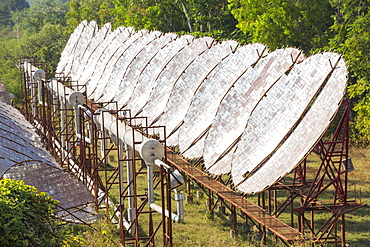
The Muni Seva Ashram in Goraj, near Vadodara, India, is a tranquil haven of humanitarian care. The Ashram is hugely sustainable, next year it will be completely carbon neutral. Its first solar panels were installed in 1984, long before climate change was on anyones agenda. Their energy is provided from solar panels, and wood grown on the estate. Waste food and animal manure is turned inot biogas to run the estates cars and also used for cooking. Solar cookers are also used, and the air conditioning for the hospital is solar run. 70 % of the food used is grown on the estate. They provide an orphanage, schools for all ages, vocational training, care for the elderly, a specialist cancer hospital withstate of the art machinary, and even have a solar crematorium. This shot shows the solar air conditioning for the Ashram's hospital.
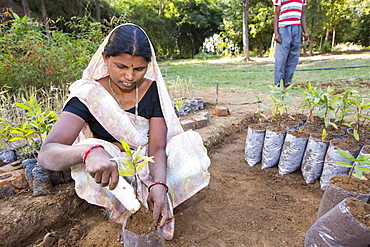
The Muni Seva Ashram in Goraj, near Vadodara, India, is a tranquil haven of humanitarian care. The Ashram is hugely sustainable, next year it will be completely carbon neutral. Its first solar panels were installed in 1984, long before climate change was on anyones agenda. Their energy is provided from solar panels, and wood grown on the estate. Waste food and animal manure is turned inot biogas to run the estates cars and also used for cooking. Solar cookers are also used, and the air conditioning for the hospital is solar run. 70 % of the food used is grown on the estate. They provide an orphanage, schools for all ages, vocational training, care for the elderly, a specialist cancer hospital withstate of the art machinary, and even have a solar crematorium. This shot shows a woman planting trees for onward growth in the Ashrams forests.

The Muni Seva Ashram in Goraj, near Vadodara, India, is a tranquil haven of humanitarian care. The Ashram is hugely sustainable, next year it will be completely carbon neutral. Its first solar panels were installed in 1984, long before climate change was on anyones agenda. Their energy is provided from solar panels, and wood grown on the estate. Waste food and animal manure is turned inot biogas to run the estates cars and also used for cooking. Solar cookers are also used, and the air conditioning for the hospital is solar run. 70 % of the food used is grown on the estate. They provide an orphanage, schools for all ages, vocational training, care for the elderly, a specialist cancer hospital withstate of the art machinary, and even have a solar crematorium. This shot shows the girls school.
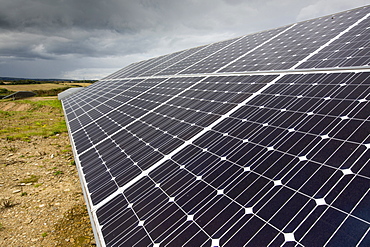
A solar park at Wheal Jane an old abandoned Cornish tin mine near Redruth, UK, that is rediscovering itself as a renewable energy hub.
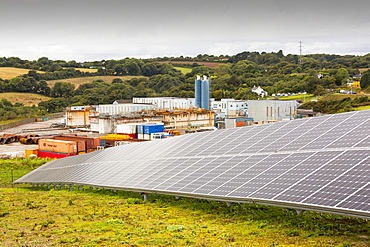
A solar park at Wheal Jane an old abandoned Cornish tin mine near Redruth, UK, that is rediscovering itself as a renewable energy hub, with the old mine buildings in the background.
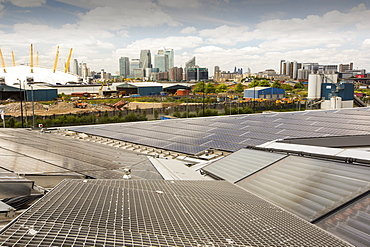
Solar thermal and solar PV panels on the roof of the Crystal building which is the first building in the world to be awarded an outstanding BREEAM (BRE Environmental Assessment Method) rating and a LEED (Leadership in Energy and Environmental Design) platinum rating. London, UK.
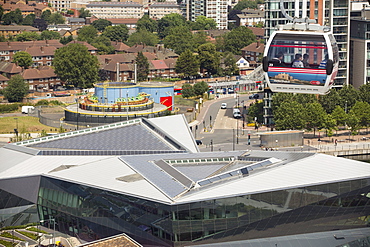
Solar thermal and solar PV panels on the roof of the Crystal building which is the first building in the world to be awarded an outstanding BREEAM (BRE Environmental Assessment Method) rating and a LEED (Leadership in Energy and Environmental Design) platinum rating. London, UK.
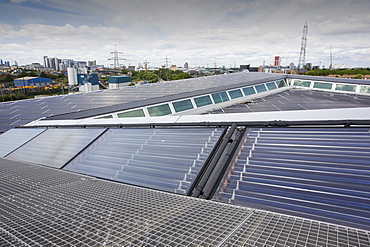
Solar thermal and solar PV panels on the roof of the Crystal building which is the first building in the world to be awarded an outstanding BREEAM (BRE Environmental Assessment Method) rating and a LEED (Leadership in Energy and Environmental Design) platinum rating. London, UK.
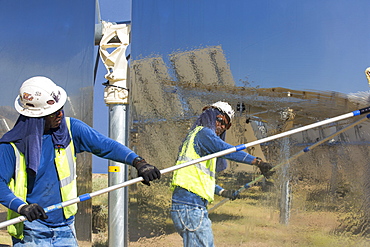
Workers washing the heliostats to maximise reflective power at the Ivanpah Solar Thermal Power Plant in California''s Mojave Desert is currently the largest solar thermal plant in the world. It generates 392 megawatts (MW) and deploys 173,500 heliostats that reflect the suns rays onto three solar towers. It covers 4,000 acres of desert.
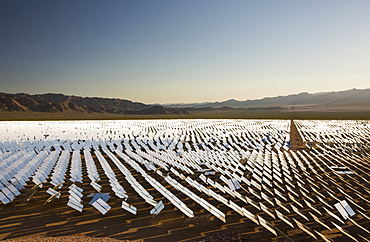
The Ivanpah Solar Thermal Power Plant in California''s Mojave Desert is currently the largest solar thermal plant in the world. It generates 392 megawatts (MW) and deploys 173,500 heliostats that reflect the suns rays onto three solar towers. It covers 4,000 acres of desert.
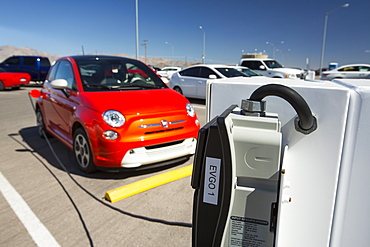
Electric cars being recharged at the Ivanpah Solar Thermal Power Plant in California''s Mojave Desert is currently the largest solar thermal plant in the world. It generates 392 megawatts (MW) and deploys 173,500 heliostats that reflect the suns rays onto three solar towers. It covers 4,000 acres of desert.
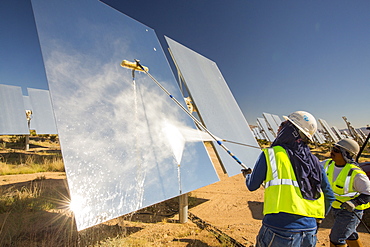
Workers washing the heliostats to maximise reflective power at the Ivanpah Solar Thermal Power Plant in California''s Mojave Desert is currently the largest solar thermal plant in the world. It generates 392 megawatts (MW) and deploys 173,500 heliostats that reflect the suns rays onto three solar towers. It covers 4,000 acres of desert.

The Ivanpah Solar Thermal Power Plant in California''s Mojave Desert is currently the largest solar thermal plant in the world. It generates 392 megawatts (MW) and deploys 173,500 heliostats that reflect the suns rays onto three solar towers. It covers 4,000 acres of desert.
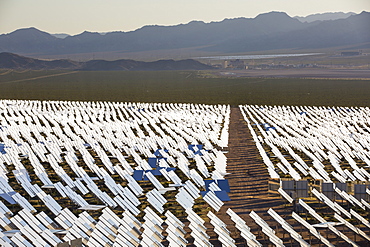
The Ivanpah Solar Thermal Power Plant in California''s Mojave Desert is currently the largest solar thermal plant in the world. It generates 392 megawatts (MW) and deploys 173,500 heliostats that reflect the suns rays onto three solar towers. It covers 4,000 acres of desert.
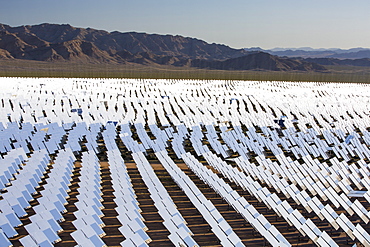
The Ivanpah Solar Thermal Power Plant in California''s Mojave Desert is currently the largest solar thermal plant in the world. It generates 392 megawatts (MW) and deploys 173,500 heliostats that reflect the suns rays onto three solar towers. It covers 4,000 acres of desert.
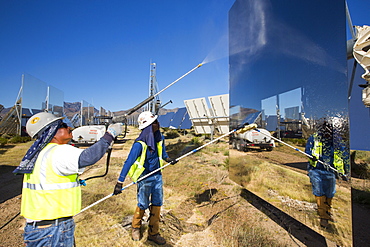
Workers washing the heliostats to maximise reflective power at the Ivanpah Solar Thermal Power Plant in California''s Mojave Desert is currently the largest solar thermal plant in the world. It generates 392 megawatts (MW) and deploys 173,500 heliostats that reflect the suns rays onto three solar towers. It covers 4,000 acres of desert.
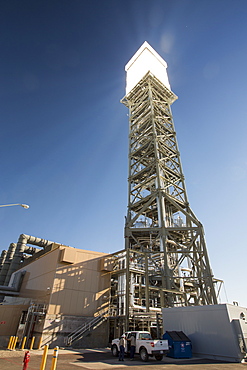
The Ivanpah Solar Thermal Power Plant in California''s Mojave Desert is currently the largest solar thermal plant in the world. It generates 392 megawatts (MW) and deploys 173,500 heliostats that reflect the suns rays onto three solar towers. It covers 4,000 acres of desert.
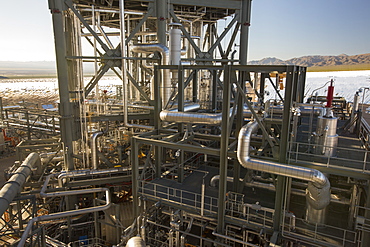
The Ivanpah Solar Thermal Power Plant in California''s Mojave Desert is currently the largest solar thermal plant in the world. It generates 392 megawatts (MW) and deploys 173,500 heliostats that reflect the suns rays onto three solar towers. It covers 4,000 acres of desert.
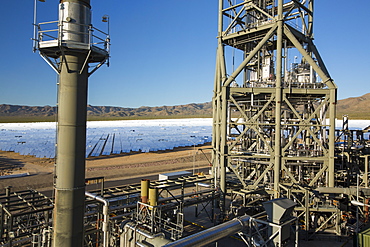
The Ivanpah Solar Thermal Power Plant in California''s Mojave Desert is currently the largest solar thermal plant in the world. It generates 392 megawatts (MW) and deploys 173,500 heliostats that reflect the suns rays onto three solar towers. It covers 4,000 acres of desert.
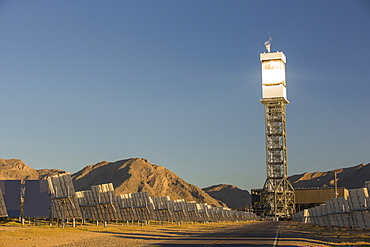
The Ivanpah Solar Thermal Power Plant in California''s Mojave Desert is currently the largest solar thermal plant in the world. It generates 392 megawatts (MW) and deploys 173,500 heliostats that reflect the suns rays onto three solar towers. It covers 4,000 acres of desert.
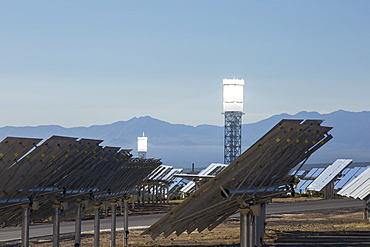
The Ivanpah Solar Thermal Power Plant in California''s Mojave Desert is currently the largest solar thermal plant in the world. It generates 392 megawatts (MW) and deploys 173,500 heliostats that reflect the suns rays onto three solar towers. It covers 4,000 acres of desert.
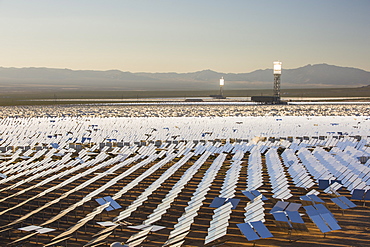
The Ivanpah Solar Thermal Power Plant in California''s Mojave Desert is currently the largest solar thermal plant in the world. It generates 392 megawatts (MW) and deploys 173,500 heliostats that reflect the suns rays onto three solar towers. It covers 4,000 acres of desert.
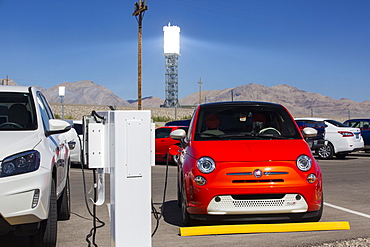
Electric cars being recharged at the Ivanpah Solar Thermal Power Plant in California''s Mojave Desert is currently the largest solar thermal plant in the world. It generates 392 megawatts (MW) and deploys 173,500 heliostats that reflect the suns rays onto three solar towers. It covers 4,000 acres of desert.
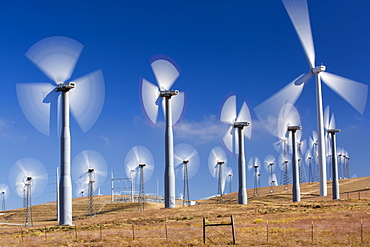
Part of the Tehachapi Pass wind farm, the first large scale wind farm area developed in the US, California, USA.
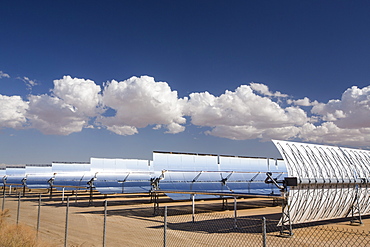
The 354 megawatts SEGS plant at Kramer Junction is the second largest solar thermal power plant in the world, mojave Desert, California, USA.
